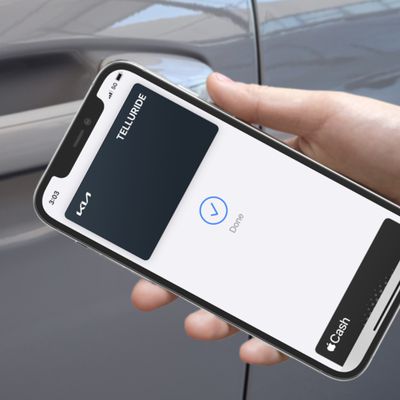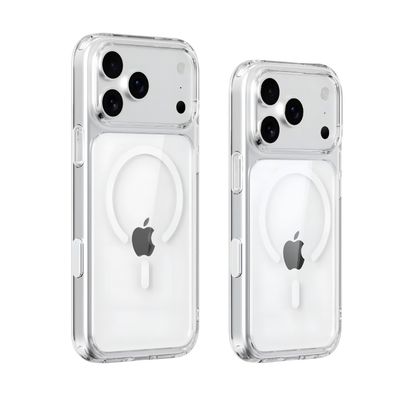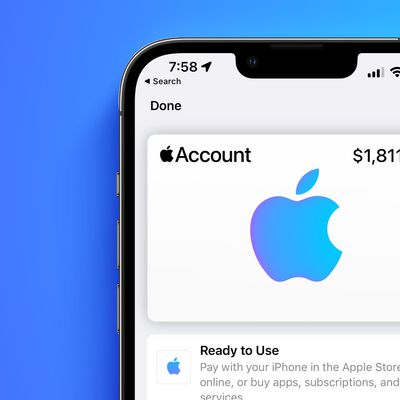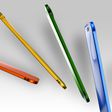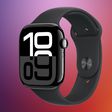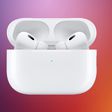A Look at Apple's 'Mastered for iTunes' Program and its Effect on Sound Quality
Earlier this year, Apple began revealing more information about its Mastered for iTunes program, requesting that music professionals supply Apple with higher-quality recordings as source material for the compressed tracks made available for sale through the iTunes Store. The higher-quality source material, processed according to Apple's guidelines, is being requested to allow Apple to create better-sounding tracks in the 256 kbps AAC format used for the iTunes Store.

Ars Technica takes a thorough look at the Mastered for iTunes program and whether it truly does make a difference to consumers. While the whole article is an interesting read on some of the technical details of audio formats and mastering and the varying perspectives of several music industry professionals, Ars' conclusion is that the Mastered for iTunes program can make a difference in quality of iTunes Store music.
We enlisted Chicago Mastering Service engineers Jason Ward and Bob Weston to help us out, both of whom were somewhat skeptical that any knob tweaking could result in a better iTunes experience. We came away from the process learning that it absolutely is possible to improve the quality of compressed iTunes Plus tracks with a little bit of work, that Apple's improved compression process does result in a better sound, and that 24/96 files aren't a good format for consumers.
Ars worked with a number of audio engineers on test projects comparing various combinations of original 24-bit, 96 kHz master recordings, uncompressed WAV files ripped from CDs, standard iTunes Store tracks, and tracks created by applying Apple's Mastered for iTunes process to the master recordings. In one example, a standard iTunes Store track sounded "boxy" or "muffled" compared to the original CD master WAV file, but after processing through Mastered for iTunes tools, the resulting track sounded significantly better and more "alive" on a subjective basis.
Part of the difficulty in assessing sound quality comes from the emotional response involved in how sounds register to human ears. Some differences in sound quality can be quantified using various tools to analyze the waveforms generated by different audio files, but the ultimate measure of sound quality lies with the human ears receiving and interpreting the sounds.
Nevertheless, Apple markets the Mastered for iTunes program as providing a path for musicians and music professionals to have iTunes Store content more closely match "music as the artist and sound engineer intended", and more and more musicians are taking advantage of the program in attempting to improve the quality of their music available through the world's most popular music vendor.
Popular Stories
Since the iPhone X in 2017, all of Apple's highest-end iPhone models have featured either stainless steel or titanium frames, but it has now been rumored that this design decision will be coming to an end with the iPhone 17 Pro models later this year.
In a post on Chinese social media platform Weibo today, the account Instant Digital said that the iPhone 17 Pro models will have an aluminum...
Apple is continuing to refine and update iOS 26, and beta three features smaller changes than we saw in beta 2, plus further tweaks to the Liquid Glass design. Apple is gearing up for the next phase of beta testing, and the company has promised that a public beta is set to come out in July.
Transparency
In some apps like Apple Music, Podcasts, and the App Store, Apple has toned down the...
The calendar has turned to July, meaning that 2025 is now more than half over. And while the summer months are often quiet for Apple, the company still has more than a dozen products coming later this year, according to rumors.
Below, we have outlined at least 15 new Apple products that are expected to launch later this year, along with key rumored features for each.
iPhone 17 Series
iPho...
Apple should unveil the iPhone 17 series in September, and there might be one bigger difference between the Pro and Pro Max models this year.
As always, the Pro Max model will be larger than the Pro model:iPhone 17 Pro: 6.3-inch display
iPhone 17 Pro Max: 6.9-inch displayGiven the Pro Max is physically larger than the Pro, it has more internal space, allowing for a larger battery and...
In 2020, Apple added a digital car key feature to its Wallet app, allowing users to lock, unlock, and start a compatible vehicle with an iPhone or Apple Watch. The feature is currently offered by select automakers, including Audi, BMW, Hyundai, Kia, Genesis, Mercedes-Benz, Volvo, and a handful of others, and it is set to expand further.
Apple has a web page with a list of vehicle models that ...
In select U.S. states, residents can add their driver's license or state ID to the Wallet app on the iPhone and Apple Watch, providing a convenient and contactless way to display proof of identity or age at select airports and businesses, and in select apps.
Unfortunately, this feature continues to roll out very slowly since it was announced in 2021, with only nine U.S. states, Puerto Rico,...
New renders today provide the best look yet relocated Apple logo and redesigned MagSafe magnet array of the iPhone 17 Pro and iPhone 17 Pro Max.
Image via Majin Bu.
Several of the design changes coming to the iPhone 17 Pro model have been rumored for some time, such as the elongated camera bump that spans the full width of the device, with the LiDAR Scanner and flash moving to the right side.
...
Apple is expanding the ability to add an Apple Account Card to the Wallet app to more countries, according to backend Apple Pay changes.
With iOS 15.5, Apple updated the Wallet app to allow users to add an Apple Account Card, which displays the Apple credit balance associated with an Apple ID.
If you receive an Apple gift card, for example, it is added to an Apple Account that is also...
Apple's next-generation iPhone 17 Pro and iPhone 17 Pro Max are just over two months away, and there are plenty of rumors about the devices.
Below, we recap key changes rumored for the iPhone 17 Pro models.
Latest Rumors
These rumors surfaced in June and July:Apple logo repositioned: Apple's logo may have a lower position on the back of the iPhone 17 Pro models, compared to previous...







